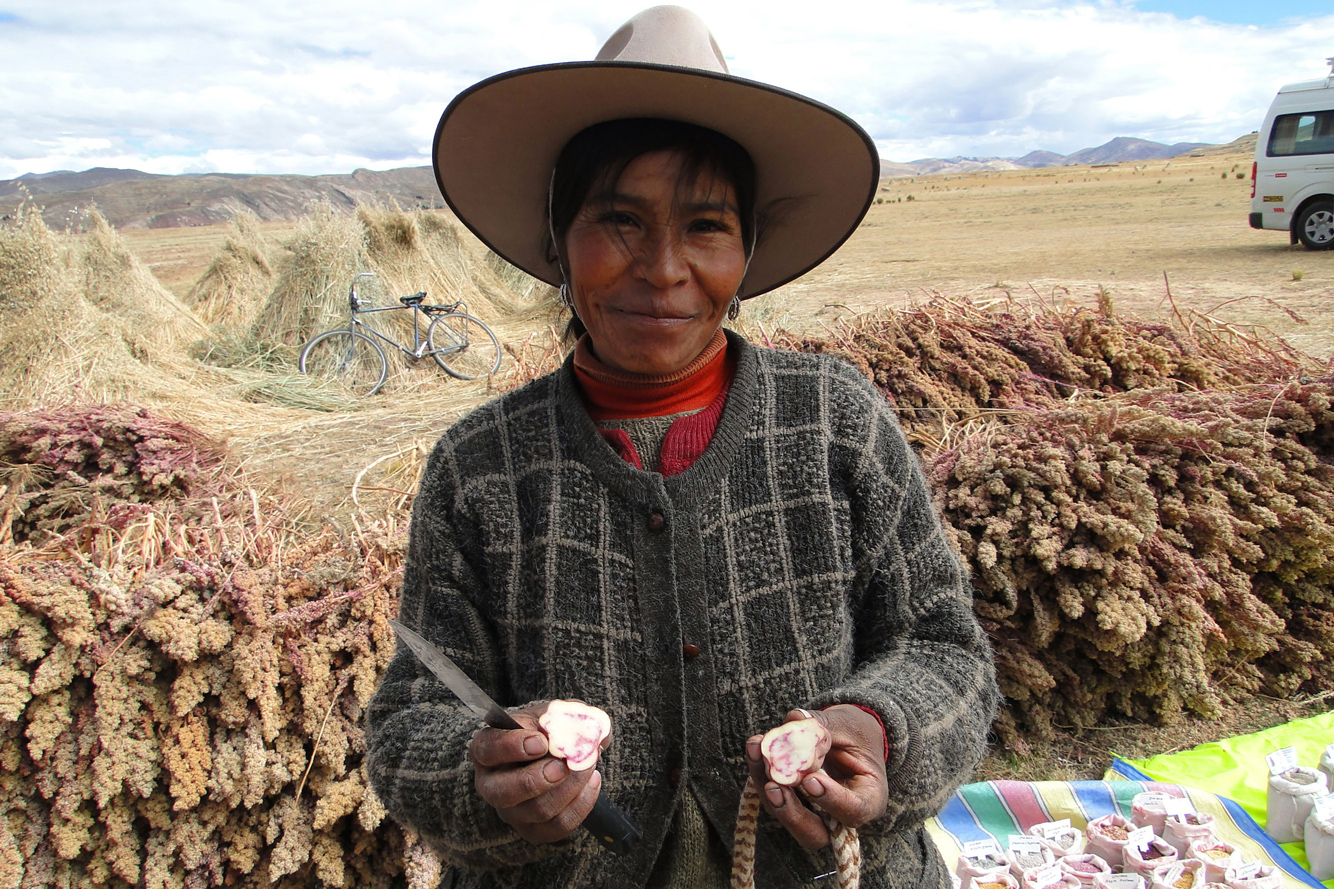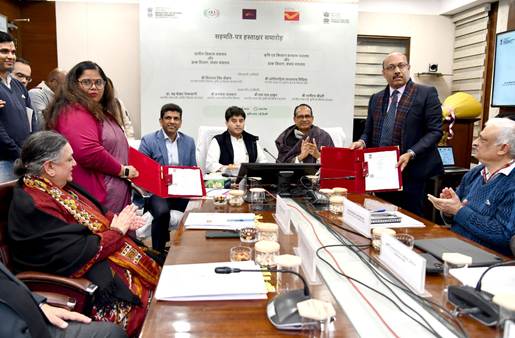
ndigenous Peoples’ communities in the Andes preserve thousands of potato varieties. ©FAO/Liana John
The potato has a long history that began in the Andes of South America about 8,000 years ago when communities of hunters and gatherers began domesticating wild potato plants that grew around Lake Titicaca. Much later, around the 16th century, the Spanish brought the potato to Europe from Peru and began growing it in their country. These tubers grown in Spain were then sent around Europe as exotic gifts to botanists and even prominent figures like the Pope.
The potato then soon gained the appreciation of sailors, who ate them during long ocean voyages. And this is generally considered how potatoes spread to the rest of the world and began to be cultivated on a large scale.

Today, the potato has become the third most consumed food in the world and a crucial component of people’s diets globally, mostly due to its ability to develop on less land than any other major crop.
For decades, however, Europe relied on a very small number of potato varieties, though a great many exist. This lack of genetic diversity in the potatoes grown in Europe made the staple very vulnerable to diseases. A glaring example was the late blight disease that destroyed potato crops in Ireland and led to the Great Famine of 1840.
The Food and Agriculture Organization of the United Nations (FAO) has made preserving the diversity of potato crops a priority to ensure this staple continues to be a pillar of sustainable agriculture and food security. Supporting this initiative is FAO’s Globally Important Agricultural Heritage System (GIAHS) programme. GIAHS are selected as places to safeguard invaluable traditions of farmers and sustainable agrifood systems that protect local, biodiverse varieties of vital crops like potatoes.
Here are four innovative GIAHS starring potatoes:
Chiloé, Chile: the birthplace of commercial potatoes
Essential for the preservation of potatoes’ biodiversity is the Archipelago of Chiloé, a GIAHS in Chile. In fact, recent DNA evidence indicates that varieties grown around the world today are closely related to Chilean potato crops.
Before agricultural modernization, the Indigenous Peoples’ communities of Chiloé cultivated from 800 to 1,000 native varieties of potatoes. However, with the appearance of diseases and the spread of commercial seeds, the number has fallen to 91 varieties. Rural women are crucial in preserving this genetic diversity and implementing conservation activities in their farms.
Today, the potato is the main crop cultivated in the remote islands of Chiloé, and it has fundamental importance for the livelihoods of local communities. But its value spans way beyond Chiloé, as the varieties grown on the archipelago contribute significantly to global food security.
The thousands of varieties in the Andes, Peru
In another GIAHS in the Andes, potato crops cultivated on the hills are a key source of nutrition for people in the region. Their cultivation is based on the traditional knowledge and sustainable practices passed on by farmers and Indigenous Peoples’ communities. Thanks to them, more than 4,000 species of potatoes, including wild potatoes, grow in the Andean region.
Andean agriculture is one of the best examples of the adaptation of farmers to their environment, as they learned to domesticate endemic species of potatoes and cultivate these crops at 3 300- 3 800 meters of altitude. Native crops are mainly consumed locally. Dehydrated potatoes, called chuño, are conserved for years and used as the primary source of food during dry periods.
Unfortunately, the migration of youth to the cities is causing a severe loss of knowledge and biodiversity, but thanks to the cultural norms and rituals of the local Indigenous communities, the system maintains its agricultural identity, preserving thousands of varieties of potatoes.
Grown out of sand in Ramli, Tunisia
In Ghar El Melh, a GIAHS in Tunisia, farmers use a unique technique called Ramli, which consists of growing food on sand.
The Ramli crops grow in sandy beds that are irrigated by freshwater through the movement of the tides. It is a very delicate system based on the knowledge and experience that farmers have passed on for generations to ensure that the crops are not inundated by salt water, which would be lethal to them.
In the lagoons of Ghar El Melh, the potato is central to local food production and a key source of livelihood for people in the region, given the high market demands.
The white gold of Barroso, Portugal
The mild climate of the GIAHS in the Barroso region of Portugal made it a perfect hotspot for potatoes. Potato cultivation became the most valuable asset for farmers, who called this crop the region’s “white gold”. This flourishing potato production allowed families to improve their living conditions, buy better clothing and upgrade their houses.
Since the 18th century, experts have written about the famous potatoes from “Tras-os-Montes,” proving the socio-cultural importance and antiquity of this product. It is thanks to its reputation and value that this crop obtained the Protected Geographical Indication, a certification that attests to the quality of a product in relation to the geographical location where it originated.
The potato has undergone a long journey over land and time, now contributing to the food security and livelihoods of billions. This is why the United Nations designated 30 May as International Day of the Potato. Celebrate by learning about locally available potato varieties and the different ways of cooking them. Share your new knowledge with friends and learn to appreciate this omnipresent tuber in a whole new way!
Source: the FAO News and Media office, Rome
– global bihari bureau





